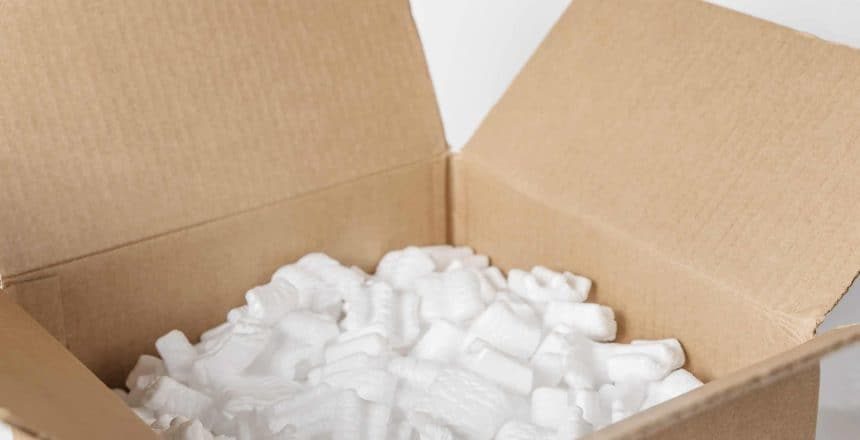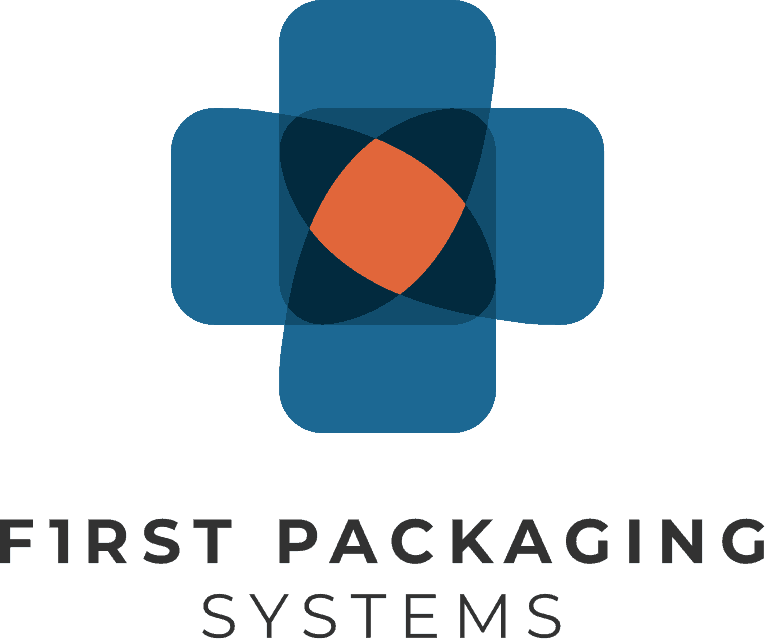There are numerous types of protective packing materials. You can have form-fitted pieces to protect sensitive electronics or fragile objects like glass or ceramics or polyfoam wrapping and lining as an added level of protection. There are different grades and stiffnesses of these products depending on your budget or the products you are packaging, shipping and distributing.
What About Packing Peanuts?
Like the packaging industry itself, “Styrofoam” (EPS-expanded polystyrene) packing materials continue to evolve– old fashioned packing peanuts included. Though they can sometimes be considered a nuisance to the end user who opens up the box, they play an important role in packaging and shipping. These packing materials are designed to provide void fill as well as cushioning while also offering a little more give as items may shift around during transit. There are pellets, noodles, classic curled shape, and even biodegradable peanuts. Environmentally friendly peanuts are the most prevalent option now as the old peanuts might be considered wasteful and harmful to the environment when thrown away.
Advantages of Packing Peanuts
It’s not always feasible to create form-fitted pieces of polyfoam and it’s not always necessary to wrap everything in bubble. Peanuts fill in the spaces around awkwardly shaped items.
They are also extremely lightweight. At 99% air, you can put as many as you need into your boxes without adding any measurable shipping weight. This may reduce your freight costs or shipping costs if you use a third-party delivery service to get your products directly to the consumer (such as in an eCommerce business).
There are times where bubble, form-fitted Styrofoam or paperboard pieces, and packing paper may be more appropriate compared to packing peanuts. All are lightweight and affordable packaging materials designed for similar protective purposes. Which material you use may depend on what you are packaging and how you are packing it.
How to Use Packing Peanuts
Here are a few helpful tips to get the most out of using packing peanuts:
Pack Them Tightly—Be careful not to dump a pile of peanuts in the box and hope things fall into place. It’s usually a good idea to use more packing peanuts than you think. Ensure there are no gaps by filling in below, above, and to the sides of any packed items. The peanuts may offer some give, but you don’t want things moving around too much inside if they are fragile!
Fill in Any Hollow Items—Packing peanuts are frequently used for loose items, sometimes having hollow spaces. A good example is a vase. In addition to surrounding it with plenty of packaging peanuts in the box, you will also want to put some peanuts, packing paper, or some other cushioning inside the vase. This way, fragile items are protected.
Make Sure There is a Buffer—If you are packing multiple items in the same box, place a buffer of packing materials in between each. Peanuts aren’t always the best for this purpose as they might allow for too much wiggle room. If using peanuts as a buffer, make sure they are packed tightly into the spaces.
Even if packing peanuts aren’t your primary source of padding material, it’s usually a good idea to have plenty around for when you need a little extra filler. They come in handy, are cheap and easy to use, and easy to find in environmentally friendly materials.
To learn more about how to get the most out of our packing peanuts and other packaging materials like Styrofoam, corrugated boxes, paper board, bubble, stretch wrap, and more, contact First Packaging Systems today.

